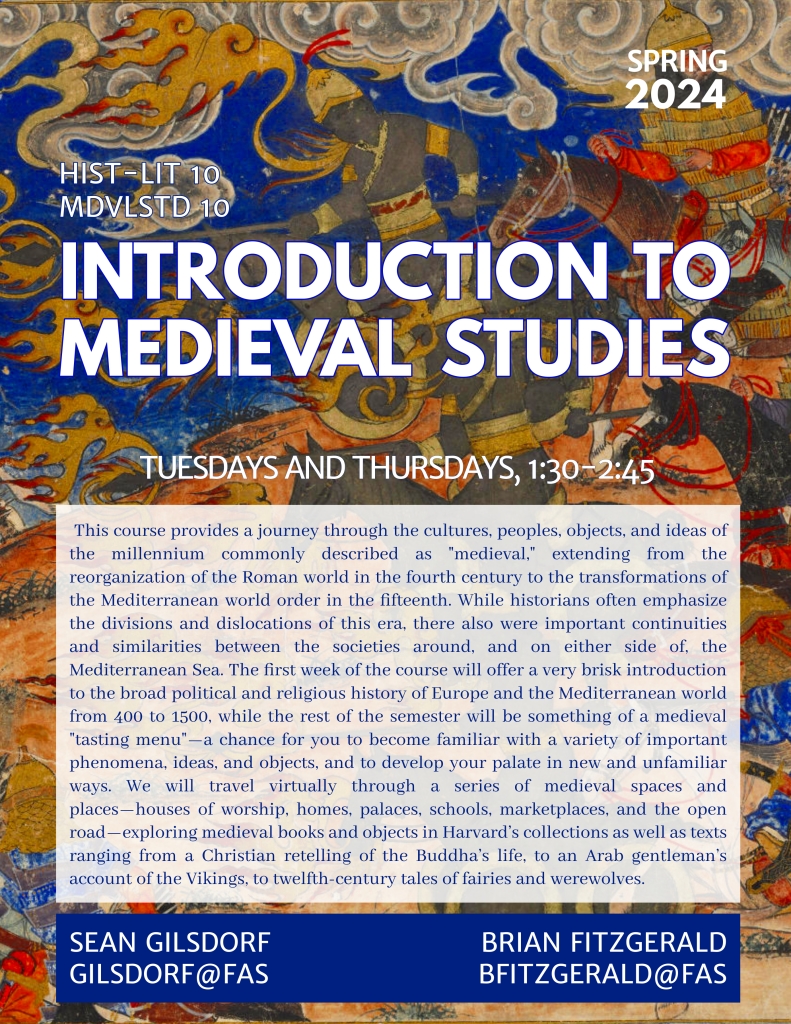Registration closes on Wednesday! Do you know what you’re taking? We’ve got a new introductory class this year, “Introduction to Medieval Studies,” co-taught by Sean Gilsdorf and Brian FitzGerald, which meets Tuesday and Thursday, 1:30-2:45.

Tell us about your class! What’s something you’re excited to share with students?
Sean here! We’re excited to introduce students to the amazing diversity of the Middle Ages (emphasis on the plural there), which we’ll do via a kind of virtual voyage through an imaginary medieval cityscape of churches, homes, schools, palaces, markets, and winding roads. As to highlights: lots to choose from, but a poignant long letter from a mother to her son written in southern France over a millennium ago, and a wild “first of its kind” list written in Central Asia a few hundred years later, are favorite texts of mine.
What’s something surprising students might not know about this topic?
How many completely AWESOME (and hilarious) medieval stories there are, and how many medieval writers and artists were hipsters. Also, that Alexander the Great was a global superstar in the Middle Ages.
What kind of things can students expect to look at in class?
While every week will be an adventure, we’re particularly looking forward to spending time with medieval books (one of them 1200 years old) in the Houghton Library, and with a bunch of medieval objects (bowls, lamps, jewelry, coins, you name it) at the Harvard Art Museums. There’s also a scavenger hunt in the works, but we don’t want to ruin the surprise …
Why should students take this class?
Apart from the obvious (it’s soooo fun)? Because—unlike in Las Vegas—what happened in the Middle Ages didn’t stay in the Middle Ages. Stuff we identify as “modern”—world literature, higher education, Realpolitik, bureaucracy—all are key features of the medieval world. Understanding this fact helps us better understand ourselves.
What’s the best movie about the Middle Ages?
I thought you were going to ask my favorite color (purple … no, green), which is a hint to my answer to your actual question. More recently, The Little Hours is totally anachronistic, but also a wonderful evocation of the Decameron’s overall vibe (a text, by the way, that we’ll be reading in class—sorry, couldn’t resist the cross-promotion opportunity).
How can students learn more?
Take a gander at our Canvas site, and (of course) get in touch with me and Brian any time!

You must be logged in to post a comment.